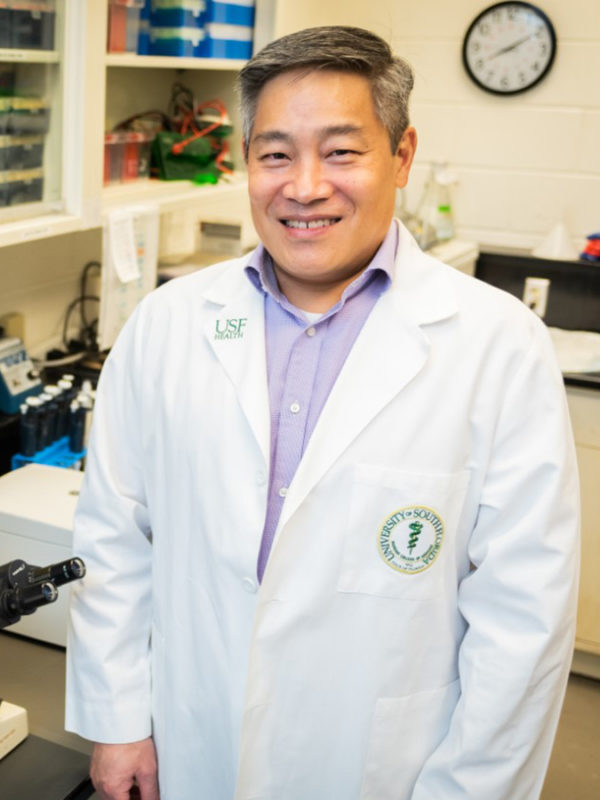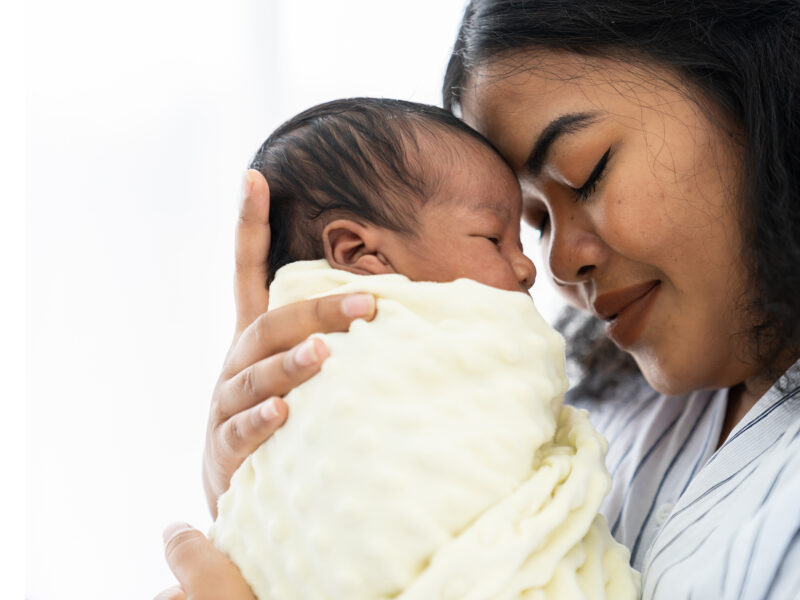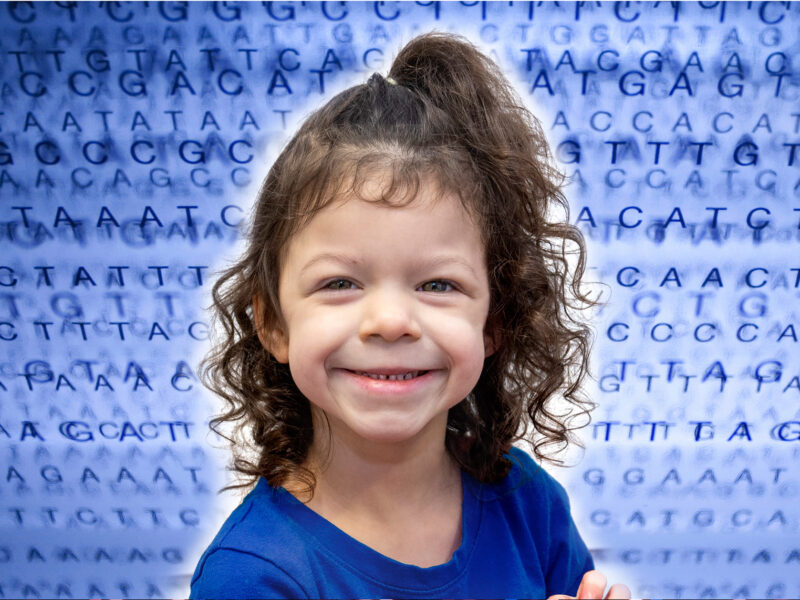Understanding Immune Responses to Build a Better Vaccine
Understanding Immune Responses to Build a Better Vaccine https://pediatricsnationwide.org/wp-content/uploads/2021/04/RSV-Covid-Connection-1024x606.jpg 1024 606 Abbie Miller Abbie Miller https://pediatricsnationwide.org/wp-content/uploads/2023/05/051023BT016-Abbie-Crop.jpg
Researchers have used studies of respiratory syncytial virus and infant immune responses to develop a promising vaccine candidate.
Respiratory syncytial virus (RSV) is an incredibly common yet potentially deadly pathogen.
Almost everyone becomes infected with RSV during their first three years of life, but for certain populations — infants and elderly or immunocompromised people — RSV infection can lead to hospitalization or even death. According to the Centers for Disease Control and Prevention (CDC), RSV causes an average of 2.1 million outpatient visits and 58,000 hospitalizations among children younger than 5 years old each year in the United States alone.
Unfortunately, the search for a vaccine for this dangerous virus has been long and complicated. Researchers have been working on a vaccine since the virus was identified more than 60 years ago. Many vaccine candidates have been proposed over the decades, and all have ultimately failed to provide a satisfactory protective response — but that may be changing.
Teamwork Makes the Dream Work
In 2015, a team of six researchers received a $6.75 million program project grant from the National Institutes of Health to study immune responses to RSV with the ultimate goal of developing a vaccine candidate.
The team spans multiple areas of expertise and three research institutions: Nationwide Children’s Hospital, The Ohio State University and the University of South Florida. Its principal investigators include Octavio Ramilo, MD, Asuncion Mejias, MD, PhD, Mark Peeples, PhD, Jianrong Li, DVM, PhD, Stefan Niewiesk, DVM, PhD, and Michael Teng, PhD.
“Program project grants are not easy to obtain, but they are an effective mechanism to bring investigators together,” says Dr. Teng, who is a virologist at the University of South Florida. “With this group, we can play off of each other, building on each other’s strengths and insights.”
That spirit of collaboration has resulted in a prolific research publication record. The team has published more than 46 peer reviewed articles based on grant funded research. And even more importantly, they’ve achieved their initial goal of developing a vaccine candidate for RSV.
“One of the most problematic barriers to developing an RSV vaccine in the past was the lack of collaboration,” says Dr. Niewiesk, a professor in the Department of Veterinary Biosciences at Ohio State. “We need more people working together with different types of expertise to make progress in this field — that approach is what
has helped us to be successful.”
“Forty six papers from our team — 39 with at least two of the six principal investigators in the group — is a remarkable feat,” says Dr. Ramilo, chief of Infectious Diseases and principal investigator in the Center for Vaccines and Immunity at Nationwide Children’s. “Many of these papers have been in high-impact journals, and some describe research that has led to patents. We have been able to greatly add to the knowledge about RSV and immune responses in infants.”
“Forty six papers from our team — 39 with at least two of
the six principal investigators in the group — is a remarkable feat. Many of these papers have been in high-impact journals, and some describe research that has led to patents. We have been able to greatly add to the knowledge about RSV and immune responses in infants.”
– Octavio Ramilo, MD
Laying the Foundation
The researchers say that another key to their success has been to focus on the immune profiles of infants affected by RSV — those who have mild disease and those who get severe disease.
In short, if you know what the immune profile of a baby who successfully recovers from RSV disease looks like, you can design a vaccine candidate that produces that same response in babies who haven’t been infected, preparing them to better protect themselves from a future encounter with the virus.
“To have a successful vaccine, you need to reduce viral replication — that is, attenuate the virus. In the past, vaccine candidates were often so attenuated that they could not induce an effective immune response, and if they could, they were not attenuated enough,” says Dr. Teng.
“If we can attenuate the virus in a way that also enhances the host immune response, we will be successful,” says Dr. Li, professor of virology at Ohio State.
“The work of Drs. Mejias and Ramilo helps us to identify signals that the virus-infected cells in children produce that lead to a protective immune response. Those signals become our goals for vaccine candidates,” says Dr. Teng.
To find the right signals, Drs. Mejias and Ramilo have led numerous studies teasing apart the complicated web of immune responses in infants and children with RSV infection.
Even before the program project grant brought the larger team together, Drs. Mejias and Ramilo were analyzing the RNA profiles — biosignatures — of RSV-infected children to understand which genes were activated in children with mild disease compared to those who develop severe disease.
In a 2013 study published in PLoS Medicine they showed the benefits of using RNA profiles as a diagnostic tool for differentiating RSV and influenza or rhinovirus infections and for objectively assessing RSV disease severity. This research formed the bedrock of much that has followed.
“There is so much to learn about how different variables affect immune responses in children and infants with RSV,” says Dr. Ramilo. “We use many techniques, genomics, transcriptomics and metabolomics to look at how age, viral load, immune response and disease severity interact.”
Sometimes, the team’s findings have surprised them.
A 2019 study published by the team in Journal of Infectious Diseases showed that children with milder disease actually were producing more virus than children with severe disease.
“This result was counterintuitive, because it was assumed that greater amount of virus in nasal secretions during the acute infection would be associated with more severe disease,” says Dr. Mejias. “But this is not the case with RSV. It appears that higher RSV loads trigger a more robust mucosal immune response that in turn is associated with better outcomes.”
Additional research by the team, including their 2020 publication in Science Translational Medicine, confirmed these surprising results. This led to an insight in clinical outcomes.
“Among babies who were hospitalized, those that received systemic steroids, which are not routinely indicated for the management of RSV infection, cleared the virus at a slower pace and had worse outcomes,” says Dr. Ramilo. “This observation is specifically relevant for children with severe RSV infection hospitalized in the PICU, for whom treatment with steroids should be avoided.”
But how do immune profiles help researchers develop vaccines?
“By defining what a protective immune profile looks like, we can design the vaccine candidates that should stimulate that response,” says Dr. Mejias. “For example, we know based on in vivo and in vitro studies that higher levels of IL-6 indicate a more severe illness. But higher levels of IP-10 are protective. Understanding a ‘good’ immune response is critical to our success in developing an effective vaccine.”
While the team’s understanding of the immune response to RSV has greatly improved and has influenced the development of a vaccine candidate, they say there’s still more to learn. Further understanding, defining and potentially manipulating immune responses to RSV could lead to a better vaccine.
Building the Vaccine
With a better understanding of successful immune profiles, the team of researchers has been able to develop vaccine candidates that achieve that immune response with weakened viruses that don’t cause illness.
The team’s novel approach, described in a recent publication in the Journal of Virology, uses a recombinant RSV carrying mutations in two viral proteins, one in the RSV G protein that attaches the virus to the ciliated cells lining the airways, and one in the RSV polymerase protein that replicates the virus genome.
“We learned several years ago that the G protein is cut when RSV is produced in cultured cells, making the virus less able to infect the cells lining the nose, that’s where this vaccine will be given. We located the site of the cut and mutated it to prevent this cleavage. As a result, we increased the amount of vaccine we can produce by 5 times. That will make the vaccine more economical to produce, another of our goals,” says Dr. Peeples.
Dr. Li’s focus is the other side of this vaccine candidate: the large polymerase (L) protein. The main function of the L protein is to make viral RNA, genome RNA and messenger RNA that is translated into viral proteins. By modifying the L protein, researchers can slow down the production of RNA and therefore the speed of virus replication, attenuating the virus so it cannot cause disease. And, as a bonus, these same mutations induce a protective immune profile, more like that found in patients with mild RSV disease.
The result is a virus that grows well in cultured cells initiates infection efficiently in vivo, but is also highly attenuated in vivo, while inducing a protective immune response.
“Our work on the vaccine components is synergistic,” says Dr. Li, who has been collaborating with Dr. Peeples on different projects for more than 15 years. “By addressing both attenuation and immunogenicity, we knew we could develop an effective vaccine for RSV.”
Testing the Candidate
The vaccine candidate was evaluated in the cotton rat model for in vivo immunogenicity and protection. Dr. Niewiesk is an expert in using this model for respiratory viruses.
“We use the cotton rat for RSV, rather than mice, because the cotton rat is much more susceptible to RSV infection and more predictive of human neutralizing antibody production in response to RSV,” he explains.
Neutralizing antibodies are those that can act against the virus in the respiratory tract — preventing illness within a person as well as infection between people.
Intranasal delivery of a small dose of the RSV vaccine candidate provided complete protection of both the upper and lower respiratory tracts.
What’s Next?
Experiments are already underway to improve the recently published candidate even further — the team isn’t satisfied with “good” when “better” is within sight.
Part of the reason to push for the best possible vaccine is the vulnerable nature of the intended recipients. Infants and elderly patients who are at highest risk for severe RSV disease are also the highest risk for vaccine complications.
Dr. Peeples’ work on the F (fusion) protein is the other half of the immunogenicity coin. The researcher says the F protein on the surface of RSV is the target for nearly all neutralizing antibodies. The F protein grabs the target membrane and initiates fusion with its own membrane, delivering the virus genome to the target cell.
“We know that antibodies to the F protein are the best at neutralizing RSV. And we know that the original form of the F protein — pre-fusion F — is by far the best form for inducing neutralizing antibodies. Our next goal is to add a stabilized version of the pre-fusion F protein to the vaccine to increase its potency,” says Dr. Peeples.
“We also must ensure that our live attenuated vaccine remains attenuated,” says Dr. Li. “If it were to revert to the wild-type RSV, it could harm patients. To avoid this possibility, we are combining multiple mutations, and using deletion or insertion mutations where possible because they are much less likely to revert.”
Additionally, the team is interested in long-term protection against RSV. Several types and strains of RSV circulate in the community, and individuals can get repeatedly infected. One way to achieve a longer term immunity is to enhance the innate immune response to the virus. However, RSV is notorious for bypassing interferon responses.
“We have developed a strategy to enhance the type 1 interferon response to improve long-term immunity,” says Dr. Li. “And we look forward to testing it to see if, as we predict, it will improve the vaccine.”
“While we are very excited about the candidate vaccine that we’ve already developed by applying what we’re learning about the immune response of children, we’re looking forward to enhancing the response to the virus in hopes of making our vaccine candidate even better,” says Dr. Peeples. “We’ll compare all these candidates in cultured cells from the airways and in cotton rats to identify the best possible vaccine by all the criteria we have developed, before moving into clinical trials.”
This article appeared in the 2021 Spring/Summer print issue. Download the full issue.
References:
- Jenkin T, Wang R, Harder O, Xue M, Chen P, Corry J, Walker C, Teng M, Mejias A, Ramilo O, Niewiesk S, Li J, Peeples ME. A novel live attenuated RSV vaccine candidate with mutations in the L protein SAM binding site and the G protein cleavage site is protective in cotton rats and a rhesus macaque. Journal of Virology. 2021 Jan;95(3):e01568-20.
- Xue M, Wang R, Harder O, Chen P, Lu M, Cai H, Li A, Liang X, Jennings R, La Perle K, Niewiesk S, Peeples ME, Li J. Stable attenuation of human respiratory syncytial virus for live vaccines by deletion and insertion of amino acids in the hinge region between the mRNA capping and methyltransferase domains of the large polymerase protein. Journal of Virology. 2020 Nov 23;94(24):e01831-20.
- Heinonen S, Velazquez VM, Ye F, Mertz S, Acero-Bedoya S, Smith B, Bunsow E, Garcia-Maurino C, Olivia S, Cohen DM, Moore-Clingenpeel M, Peeples ME, Ramilo O, Mejias A. Immune profiles provide insights into respiratory syncytial virus disease severity in young children. Science Translational Medicine. 22 Apr 2020;12(540):eaaw0268.
- Binjawadagi B, Ma Y, Binjawadagi R, Brakel K, Harder O, Peeples M, Li J, Niewiesk S. Mucosal delivery of recombinant VSV vectors expressing envelope proteins of RSV induces protective immunity in cotton rats. Journal of Virology. Feb 2021;95(6):e02345-20.
- Garcia-Mauriño C, Moore-Clingenpeel M, Thomas J, Mertz S, Cohen DM, Ramilo O, Mejias A. Viral load dynamics and clinical disease severity in infants with respiratory syncytial virus infection. Journal of Infectious Disease. 2019 Apr 8;219(8):1207-1215.
- Kwilas S, Liesman RM, Zhang L, Pickles RJ, Walsh E, Peeples ME. Respiratory syncytial virus grown in Vero cells contains a truncated attachment protein that alters its tropism. Journal of Virology. 2009;83:10710-10718.
- Corry J, Johnson SM, Peeples ME. Preventing cleavage of respiratory syncytial virus attachment protein in Vero cells rescues the infectivity of progeny virus for primary human airway cultures. Journal of Virology. 2016;90(3):1311-1320.
- Mejias A, Dimo B, Suarez N, Garcia C, Suarez-Arrabal MC, Jartti T, Blankenship D, Jordan-Villegas A, Ardura MI, Zhaohui X, Banchereau J, Chaussabel D, Ramilo O. Whole blood gene expression profiles to assess pathogenesis and disease severity in infants with respiratory syncytial virus infection. PLoS Medicine. 2013;10(11):e1001549.65599.
About the author
Abbie (Roth) Miller, MWC, is a passionate communicator of science. As the manager, medical and science content, at Nationwide Children’s Hospital, she shares stories about innovative research and discovery with audiences ranging from parents to preeminent researchers and leaders. Before coming to Nationwide Children’s, Abbie used her communication skills to engage audiences with a wide variety of science topics. She is a Medical Writer Certified®, credentialed by the American Medical Writers Association.
- Abbie Millerhttps://pediatricsnationwide.org/author/abbie-miller/
- Abbie Millerhttps://pediatricsnationwide.org/author/abbie-miller/
- Abbie Millerhttps://pediatricsnationwide.org/author/abbie-miller/
- Abbie Millerhttps://pediatricsnationwide.org/author/abbie-miller/













